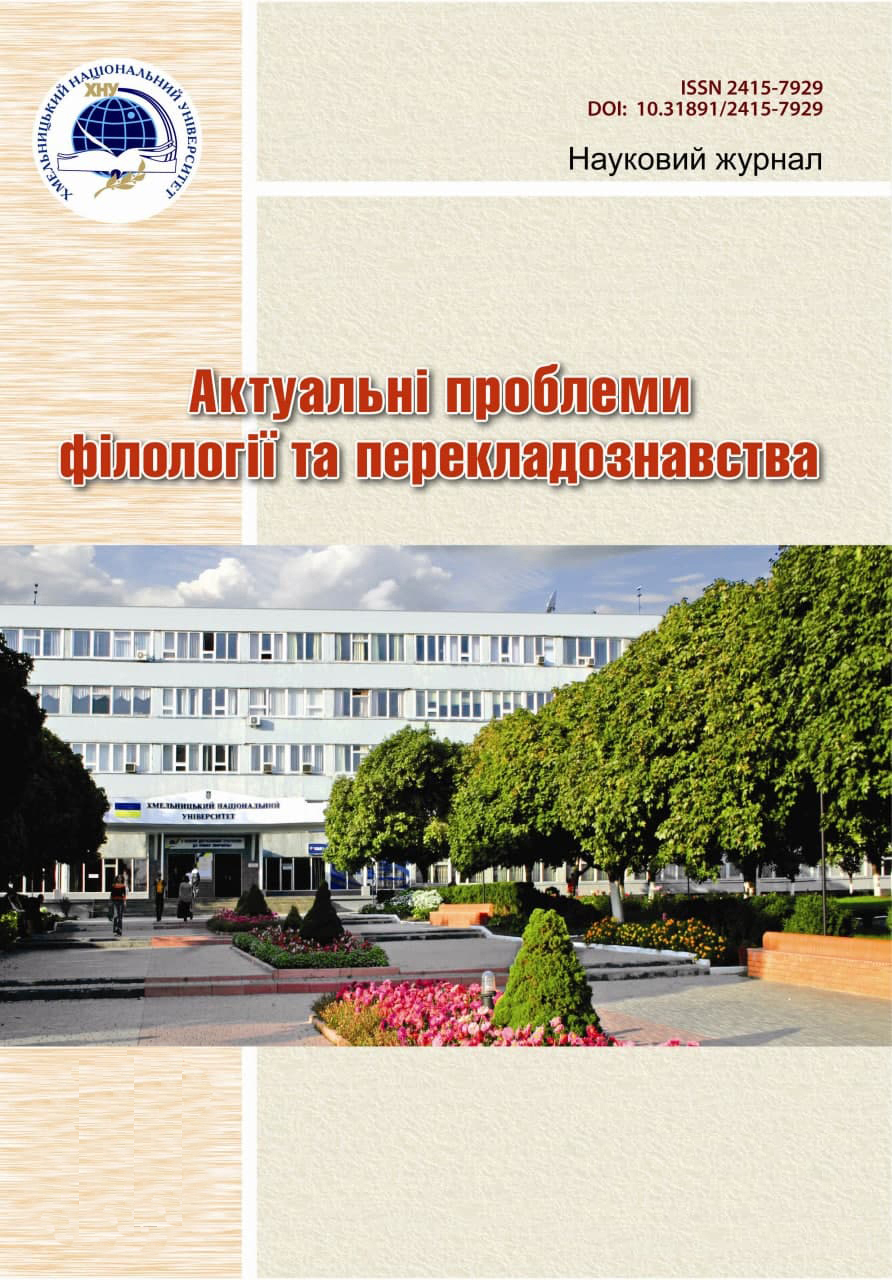MEANS OF EXPRESSIVE SYNTAX OF MATILDA BY ROALD DAHL AND WAYS OF THEIR REPRODUCTION IN UKRAINIAN TRANSLATION
DOI:
https://doi.org/10.31891/2415-7929-2025-34-5Keywords:
literary translation, expressiveness, expressive syntax, translation, grammatical transformationAbstract
The article deals with the means of expressive syntax in Roald Dahl's novel “Matilda” and the ways of their reproduction in the Ukrainian translation performed by V. Morozov. The main scientific results are obtained applying a set of general scientific and special methods of research, namely: analysis and generalization of scientific literature on the problems of expressive syntax; theoretical generalization, analysis and synthesis; comparative, descriptive and analytical methods.
The authors define expressiveness as a system of linguistic means aimed at emphasizing the meaning or enhancing the reader's perception of the text. Expressive grammatical constructions form the syntactic level of expressive means.
The authors analyze such means of expressive syntax as amplification, conjunctionless and multi-conjunctional sentences, word order changes, syntactic repetition, parallelism, ellipsis, rhetorical figures, violation of syntactic order, inversion, and emphatic constructions.
The reproduction of expressive means in translation involves the use of translation transformations. The authors analyze the application of such grammatical transformations as compensation, replacement, elliptical constructions, and integration, which helps to realize the author's idea in another language while maintaining its emotional intensity and accessibility for children's perception.
It is proved that the means of expressive syntax contribute to the semantic condensation and logical expression of thought, place accents on important elements of a literary text, emphasize the explicitly expressed content and reveal deeper meanings, generate a certain tone of speech, and thus help to emotionally influence the reader.
Downloads
Published
Issue
Section
License
Copyright (c) 2025 Світлана ОСТАПЕНКО, Іван КОВАЛЕЦЬ (Автор)

This work is licensed under a Creative Commons Attribution 4.0 International License.

